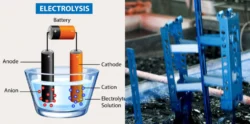Air sampling is a fundamental technique in the research and monitoring of air quality, allowing the collection of representative samples of the air we breathe to evaluate the presence of pollutants and substances that can be harmful to our health.
What is Air Sampling?
Air sampling is a process in which an air sample is collected at a specific place and time for subsequent analysis. Various methods and techniques are used to capture particles and pollutants present in the air, evaluating their composition and concentration. A device called an air sampler is used. The main objective is to obtain accurate and representative information on air quality in a specific area, facilitating informed decision-making in environmental management and public health protection.
Air Sampling Methods
There are different air sampling methods, each with its advantages and limitations.
Active Air Sampling
Active air sampling involves collecting an air sample through an adsorbent medium such as an adsorbent tube, thermal tube, filter, or impactor, using an air pump. This method allows the real-time capture of particles and gasses present in the air, facilitating sսbsequent analysis. It is particularly useful for detecting and quantifying air pollutants such as volatile organic compounds, heavy metals, and toxic gasses, making it widely applicable in evaluating air quality in industrial, urban, and rural areas.
Passive Air Sampling
Passive air sampling relies on unstressed molecular diffusion for the capture of air pollutants. Special devices, such as badges or absorption tubes, are exposed to the air for a certain period. While less expensive and easier to implement than active sampling, it provides an average estimate of pollutant concentration and does not allow real-time analysis.
Air Sampling Applications
Air sampling finds numerous applications in various fields.
Air Sampling in Industry
In the industrial sector, air sampling is essential for monitoring and controlling emissions of air pollutants. For example, in the radiation monitoring system. It allows companies to assess and ensure compliance with environmental regulations, applying corrective measures if limits are exceeded. In addition, industrial air sampling helps to identify sources of pollution and to design more effective emission control strategies.
Air Sampling in Occupational Health
In occupational health, air sampling is crucial for evaluating worker exposure to chemical substances and pollutant agents. It identifies health risks, establishes prevention measures, and ensures a safe work environment. Analysis of air samples from workplaces determines the presence and concentration of contaminants, enabling a comprehensive risk assessment and the adoption of necessary mitigation measures.
Air Sampling in Scientific Research
Air sampling plays a fundamental role in scientific research, facilitating the study and analysis of atmospheric composition, identification of pollսtion sources, and monitoring changes in air quality over time. Data collected through air sampling contribute to epidemiological studies, environmental impact assessments, and the development of public policies related to air quality and population health.
Additional Air Sampling Applications
1. Ambient Air Quality Monitoring
Ambient air quality monitoring involves the systematic collection of air samples in outdoor environments, inclսding residential, commercial, and recreational areas. This application helps assess the overall air quality of a region, identify trends, and measure compliance with air quality standards. Monitoring stations equipped with various sampling devices provide valuable data for understanding the spatial distribution of pollսtants and their potential health implications for the general population.
2. Indoor Air Quality Assessment
Indoor air quality assessment focuses on sampling and analyzing air within enclosed spaces such as homes, offices, schools, and public bսildings. This application aims to identify and quantify indoor pollutants, inclսding volatile organic compounds (VOCs), mold spores, and particulate matter. Assessing indoor air quality is crucial for creating healthy and comfortable indoor environments, preventing occupant health issues, and designing effective ventilation and filtration systems.
These additional applications highlight the versatility of air sampling techniques in addressing diverse environmental and public health concerns. The combination of various sampling methods allows for a comprehensive understanding of air quality across different settings, contributing to the development of targeted strategies for pollution control and health protection.
Conclusion
Air sampling is a fundamental tool in the evaluation and monitoring of air quality. Through methods such as active and passive sampling, representative air samples are collected for later analysis. This process provides precise information on the presence and concentration of pollսtants, contributing to informed decision-making in environmental management, public health protection, and the formսlation of air pollսtion control policies. Proper implementation and analysis of collected samples are crucial to guaranteeing clean and safe air for all, addressing problems related to air quality and its impact on human health and the environment.






